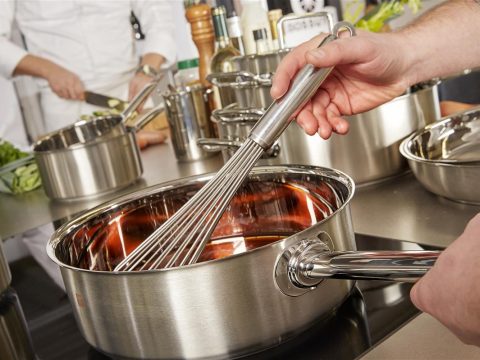The Science of Cookware: What Does 3-Ply, 5-Ply, and 7-Ply Mean?
We love it when people ask what 3-ply, 5-ply, or 7-ply means. Not just because it flatters our inner geek, but because it shows a growing trend: home cooks are becoming more curious and better informed about kitchen technology. In the past, many people stuck with what was familiar. Now, the world is changing—and so are our kitchens.
So today, let’s talk about multi-ply cookware: what it is, what it costs, and why it’s worth it.
What Does “Ply” Mean?
PLY refers to the number of metal layers used in constructing the base—or sometimes the entire body—of the cookware. This includes pans, pots, and casseroles. Each layer serves a specific purpose. More layers usually mean better heat performance, more weight, and a higher price.
What Is 3-Ply or Tri-Ply?
3-ply means three layers of bonded metal, typically:
- 18/10 Stainless Steel (Interior): Durable, easy to clean, and has a polished look.
- Aluminum Core (Middle Layer): Provides excellent heat conductivity and even cooking.
- Magnetic Stainless Steel (Exterior): Allows compatibility with induction cooktops and adds structural strength.
Why not just use plain stainless steel? Because stainless steel is a poor heat conductor. And why not just use aluminum? Because it’s reactive and prone to dents or scratches. The multi-layer construction solves both problems: performance plus durability.
What About 5-Ply and 7-Ply?
5-ply and 7-ply cookware use the same core materials as 3-ply but with additional layers for enhanced performance. They don’t tell jokes or cook the food for you, but here’s what they do offer:
- Higher material quality and more complex alloys
- Better heat distribution—not just at the base, but throughout the walls up to the rim
- Improved temperature control and retention
- Durability for professional-level use
This full-body construction (base + walls) ensures consistent cooking performance across the entire vessel. While 5-ply and 7-ply cookware is heavier, the thickness isn’t necessarily extreme—it’s about structure, not bulk.
To verify if your cookware is multi-ply, look for markings engraved on the bottom or listed on the packaging. Premium cookware brands usually produce only multi-ply items, and the higher price reflects the engineering and long-term benefits you receive.


